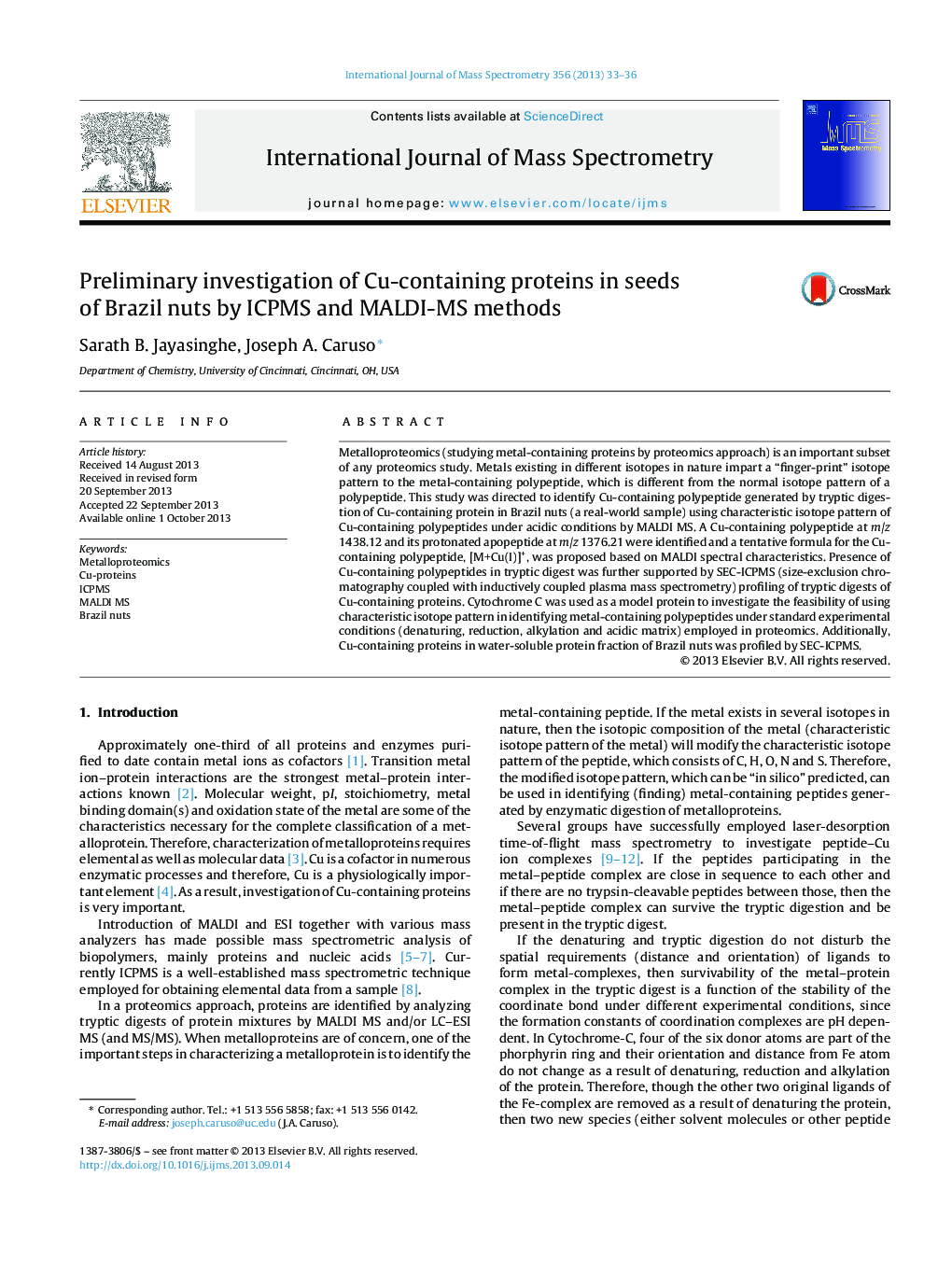| کد مقاله | کد نشریه | سال انتشار | مقاله انگلیسی | نسخه تمام متن |
|---|---|---|---|---|
| 1192991 | 1492271 | 2013 | 4 صفحه PDF | دانلود رایگان |

• Water-soluble protein fraction of Brazil nuts contains Cu-containing proteins.
• A Cu-containing peptide in tryptic digest was identified by MALDI MS using modified isotope pattern.
• A tentative formula, [M+Cu(I)]+, was proposed for the Cu-containing peptide based on MALDI MS data.
Metalloproteomics (studying metal-containing proteins by proteomics approach) is an important subset of any proteomics study. Metals existing in different isotopes in nature impart a “finger-print” isotope pattern to the metal-containing polypeptide, which is different from the normal isotope pattern of a polypeptide. This study was directed to identify Cu-containing polypeptide generated by tryptic digestion of Cu-containing protein in Brazil nuts (a real-world sample) using characteristic isotope pattern of Cu-containing polypeptides under acidic conditions by MALDI MS. A Cu-containing polypeptide at m/z 1438.12 and its protonated apopeptide at m/z 1376.21 were identified and a tentative formula for the Cu-containing polypeptide, [M+Cu(I)]+, was proposed based on MALDI spectral characteristics. Presence of Cu-containing polypeptides in tryptic digest was further supported by SEC-ICPMS (size-exclusion chromatography coupled with inductively coupled plasma mass spectrometry) profiling of tryptic digests of Cu-containing proteins. Cytochrome C was used as a model protein to investigate the feasibility of using characteristic isotope pattern in identifying metal-containing polypeptides under standard experimental conditions (denaturing, reduction, alkylation and acidic matrix) employed in proteomics. Additionally, Cu-containing proteins in water-soluble protein fraction of Brazil nuts was profiled by SEC-ICPMS.
Figure optionsDownload high-quality image (102 K)Download as PowerPoint slide
Journal: International Journal of Mass Spectrometry - Volume 356, 15 December 2013, Pages 33–36